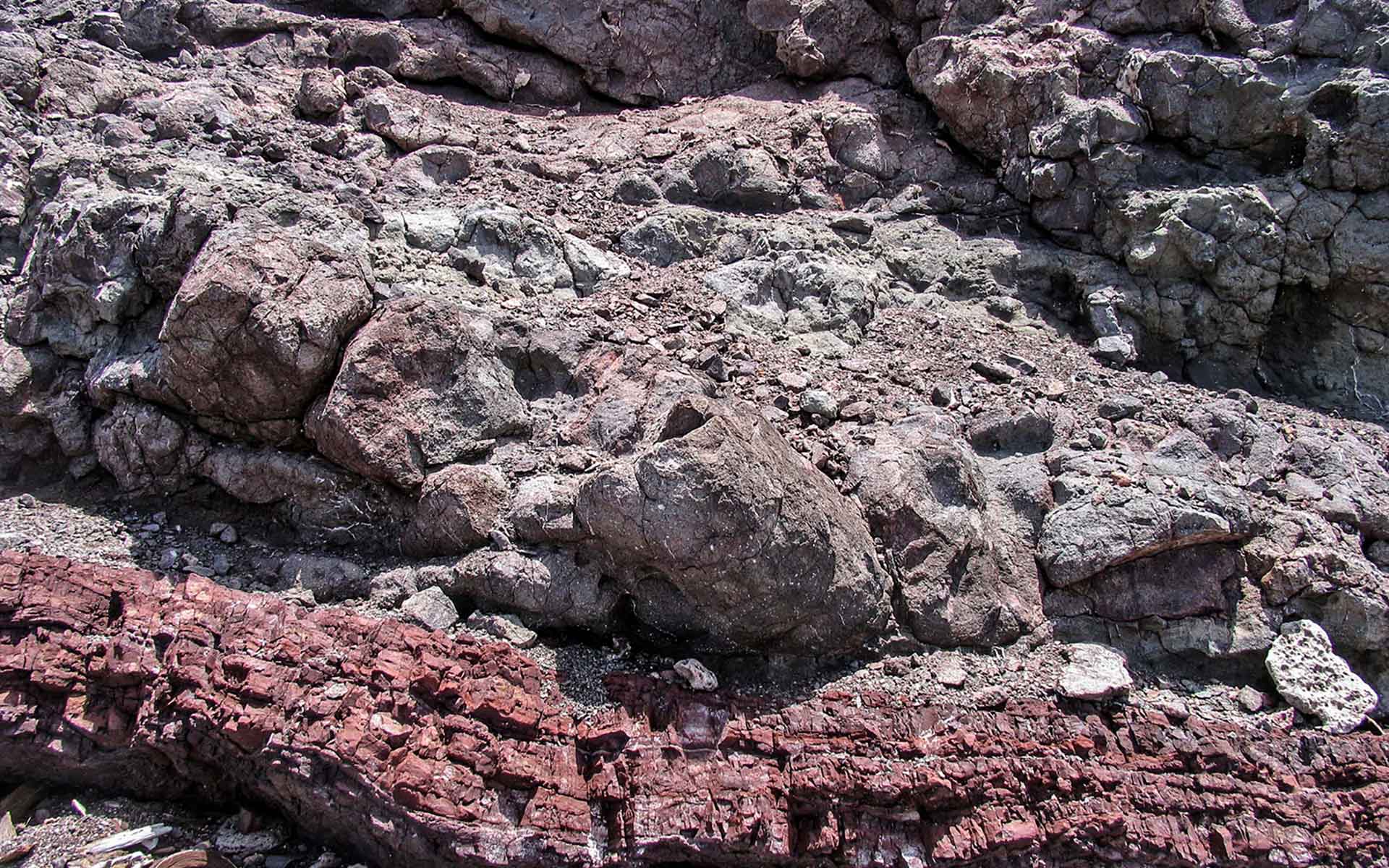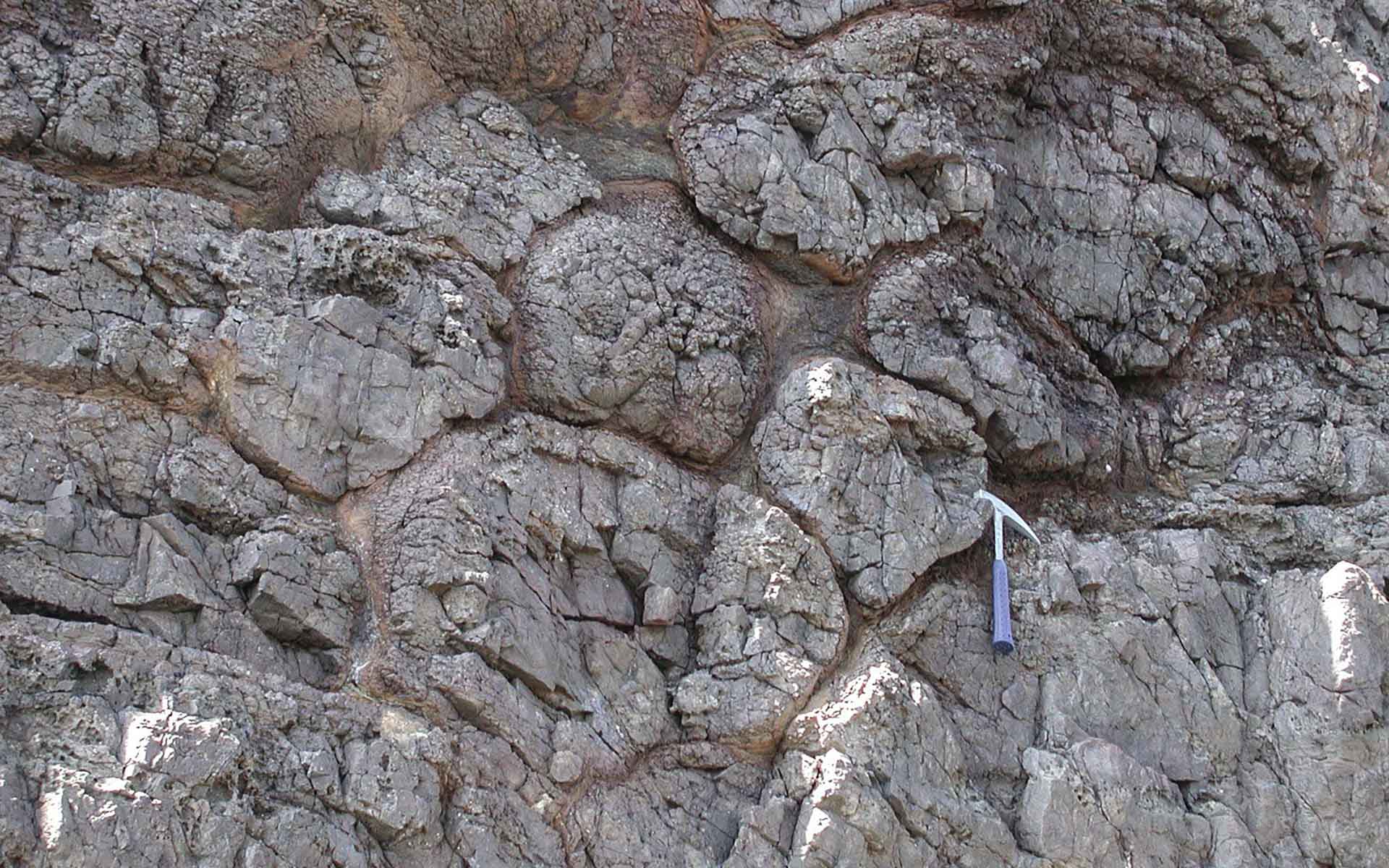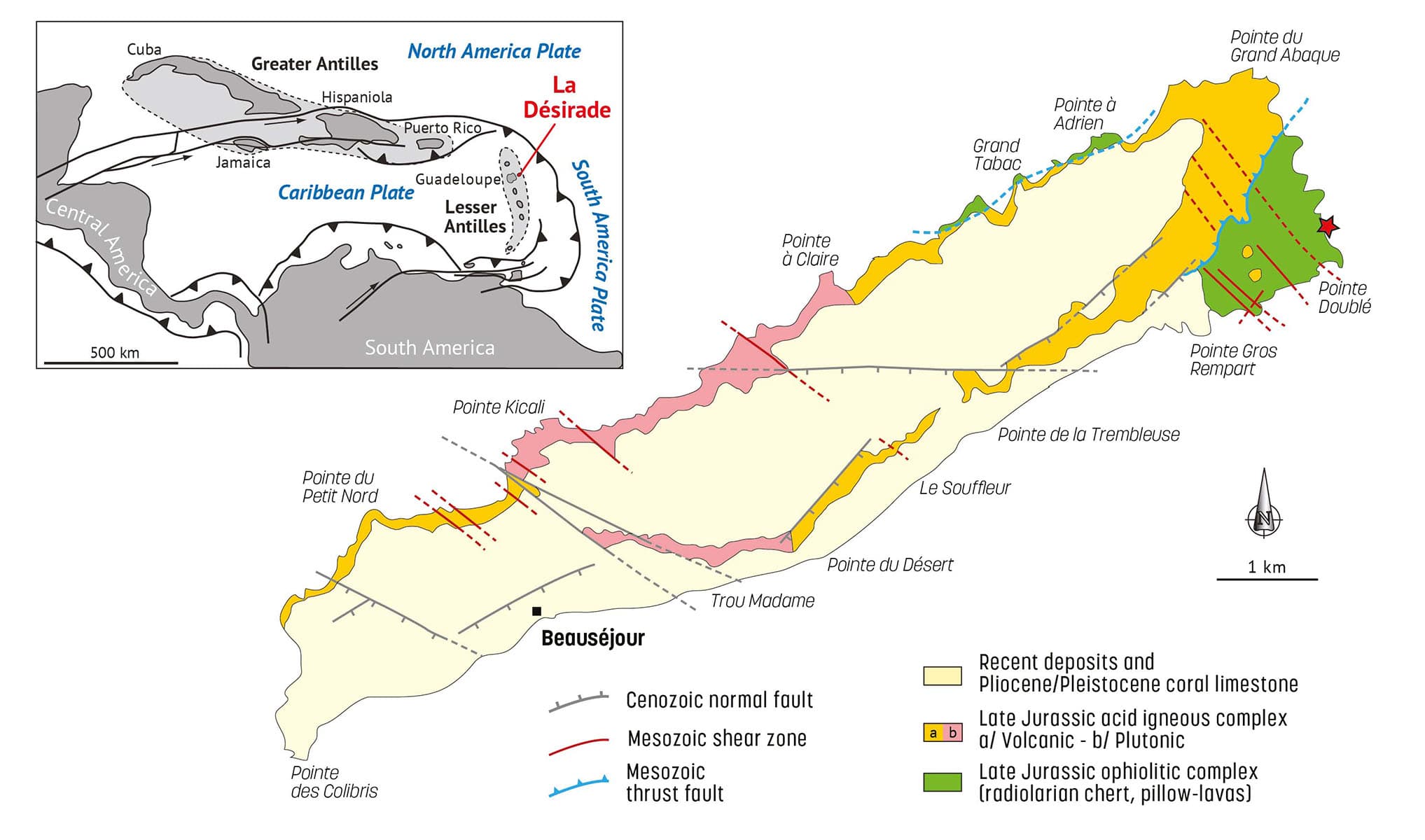
Devant-y-Bon inlet cliffs with Tithonian ophiolitic sequence made of red radiolarian chert and pillow-lava, La Désirade Island (©BRGM).
Geological Period
Upper Jurassic (Tithonian)
Main geological interest
Tectonics
Location
La Désirade Island, Guadeloupe archipelago, Lesser Antilles, France.
16°20’11.0″N, 61°00’13.0″W
Devant-y-Bon inlet cliffs with Tithonian ophiolitic sequence made of red radiolarian chert and pillow-lava, La Désirade Island (©BRGM).
The oldest witness of back-arc spreading ridge of the eastern Caribbean plate.
La Désirade Island represents the unique exposure of the oldest rocks in the Lesser Antilles arc and eastern Caribbean plate and, thus, constitutes a compelling example of the geodynamic evolution of sedimentation, volcanism and tectonism in Caribbean. This geosite is a real open-air laboratory where international geoscientists carry out various research on ophiolitic rocks (radiolarian cherts and pillow-lava) and their deformation. Outcrops are a must-see for students and are part of the French national inventory of geoheritage with a national and international interest.
- Geological description
Rocks consist in an Upper Jurassic ophiolitic complex with basaltic pillow-lava flows and interbedded radiolarites, well visible in the Devant-y-Bon inlet cliffs, along the northeastern coast. Red radiolarian chert layers are linked to an origin in the Pacific Ocean and were deposited during Tithonian, coevally to outstanding basaltic pillow-lavas emplacement (Mattinson et al., 1973, 2008; Neill et al., 2010). This sequence represents a part of the exhumed base of the Cenozoic to present-day active Lesser Antilles volcanic arc. The interpretation of the ophiolitic complex is debated, and authors propose an ophiolite-type oceanic crust or a back-arc spreading ridge model, the latter being overwhelmingly favored. The geosite is also a perfect place to observe important tectonics (faults, folds and thrusts) allowing the reconstruction of the geodynamics evolution of the Caribbean plate (Corsini et al., 2011). Indeed, La Désirade Island is a key-site, which recorded the subduction polarity reversal (between Caribbean, North and South America plates), from eastward to westward during the Late Jurassic to Early Cretaceous. Upper Pleistocene – Holocene coral limestone overlies the ophiolite complex, reflecting the recent uplift of the island and the sea-level variations during the Quaternary Period (Léticée et al., 2019).
- Scientific research and tradition
Pioneering studies date back to 1960s. Geologists demonstrated La Désirade Island is a crucial element for understanding the proto Pacific-Caribbean margin and Caribbean plate geodynamics and the current tectonic setting of the Lesser Antilles arc through numerous scientific papers. This geosite benefits from a National Natural Reserve label since 2011.
- Reference
Corsini, M. et al. (2011) ‘Discovery of Lower Cretaceous synmetamorphic thrust tectonics in French Lesser Antilles (La Désirade Island, Guadeloupe): Implications for Caribbean geodynamics’, Tectonics, 30(4). Available at: https://doi.org/10.1029/2011TC002875.
Léticée, J.-L. et al. (2019) ‘Decreasing uplift rates and Pleistocene marine terraces settlement in the central lesser Antilles fore-arc (La Désirade Island, 16°N)’, Quaternary International, 508, pp. 43–59. Available at: https://doi.org/10.1016/j.quaint.2018.10.030.
Mattinson, J.M. et al. (2008) ‘Late Jurassic age of oceanic basement at La Désirade Island, Lesser Antilles arc’, in Ophiolites, Arcs, and Batholiths: A Tribute to Cliff Hopson. Wright J. & Shervais J. (eds). (Geological Society of America, Special Paper, 438), pp. 175–190.
Mattinson, J.M., Fink, L.K. and Hopson, C.A. (1973) Age and origin of ophiolitic rocks on La Désirade Island, Lesser Antilles Island arc. (Year Book Carnegie Institute Washington, 72).
Neill, I. et al. (2010) ‘Origin of the volcanic complexes of La Désirade, Lesser Antilles: Implications for tectonic reconstruction of the Late Jurassic to Cretaceous Pacific-proto Caribbean margin’, Lithos, 120(3), pp. 407–420. Available at: https://doi.org/10.1016/j.lithos.2010.08.026.
Westercamp, D. (1980) ‘Geological map of La Désirade Island. 1:25,000-scale and explanatory notes’. Ministère de l’industrie, Bureau de recherches géologiques et minières, Service géologique national ; Service géologique régional des Antilles et de la Guyane.
- Author(s)
PhD – BRGM / French Geological Survey


